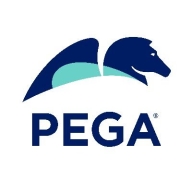

Pega Platform and Flowable compete in the business process management market. Pega Platform holds an advantage in scalability and automation capabilities, while Flowable shines with open-source flexibility and adaptability.
Features: Pega Platform stands out for process automation, AI-driven decision-making, and extensive integration capabilities. Its focus on enterprise solutions is evident. Flowable offers customizable workflow models and benefits from its open-source nature, providing flexibility and adaptability for diverse business needs.
Ease of Deployment and Customer Service: Flowable provides straightforward deployment due to its lightweight architecture, adaptable to various environments. Pega’s deployment involves more complex features, benefiting from extensive integration tools. Pega possesses well-structured customer support with extensive resources. Flowable relies on community-driven support along with professional services.
Pricing and ROI: Pega Platform indicates a higher initial setup cost reflecting its comprehensive offerings, with enterprises often finding ROI substantial through efficiency and scalability. Flowable’s open-source model leads to lower initial costs, offering favorable ROI via its adaptable business process structure. The key difference is Pega’s upfront investment for robust solutions versus Flowable’s cost-effectiveness for tailored operations.
| Product | Market Share (%) |
|---|---|
| Pega Platform | 6.3% |
| Flowable | 6.4% |
| Other | 87.3% |


| Company Size | Count |
|---|---|
| Small Business | 9 |
| Midsize Enterprise | 15 |
| Large Enterprise | 68 |
Flowable is a versatile software that streamlines and automates business processes. It is commonly used for workflow management, task automation, and digital transformation initiatives.
Users also utilize Flowable for document management, case management, and customer journey mapping. Its valuable features include efficient workflow management, seamless integration capabilities, and a user-friendly interface.
Flowable allows for smooth collaboration and task automation, and its ability to integrate with other systems and applications enables a seamless flow of information.
The intuitive and easy-to-use interface makes it accessible to users of all technical backgrounds.
Pega Platform provides flexible business process management with a focus on rapid application development and automation through a low-code approach, enhancing efficiency across sectors.
Pega Platform is renowned for its ability to streamline operations with robust automation features, including robotic process automation and decision-making capabilities. Its intuitive interface and workflow management contribute to a reputation for enhancing business processes. Although users face challenges with integration limitations and high licensing costs, they benefit from rapid deployment and efficient process adaptations. The unified architecture reduces complexity, while case management and integration services support digital transformations in sectors such as banking, insurance, and healthcare.
What are the key features of Pega Platform?In industries like insurance, banking, healthcare, and government, Pega Platform is implemented to automate diverse workflows, supporting initiatives from claims processing to customer onboarding. Enterprises use Pega for case management and digital transformations, valuing its out-of-the-box integrations and real-time reporting capabilities to boost operational automation and enhance customer experiences.
We monitor all Process Automation reviews to prevent fraudulent reviews and keep review quality high. We do not post reviews by company employees or direct competitors. We validate each review for authenticity via cross-reference with LinkedIn, and personal follow-up with the reviewer when necessary.